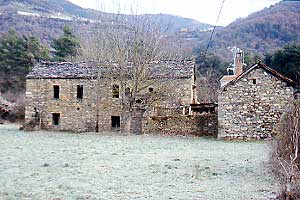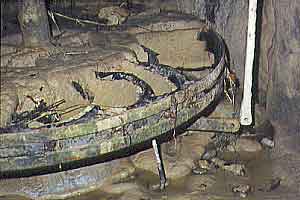
Mills in Alto Aragón
by Bernardo Molinero
Introduction
Ask most people I know to describe you a mill and they will come up with one of those enormous machines making the Netherlands a tourist trap. Others will remember the slender enemies of Don Quijote. Mention water-mill and Mississippi steamers emerge on the horizon.
Mills must dominate the landscape, most people seem to think.
Contents:
Introduction
Learn about the parts of a mill
Visit the mills; description, pictures
Read more about mills; literature, websites
E-mail to:

